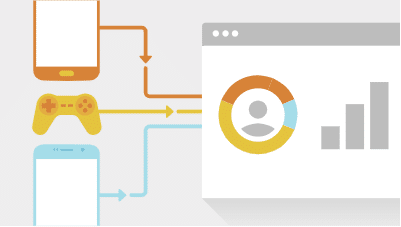Three Metrics to Improve Your Landing Pages
Key performance indicators are extremely valuable to companies performing in the digital market. One of the main advantages of selling online is that almost everything can be tracked and traced. Whether you want to report that you are making sales from a landing page using a Mailchimp campaign, or you’re trying to improve the quality of content on a web page; Google Analytics holds no secrets for you. We will give three examples of insightful KPIs, explain what they mean and how to improve your landing pages.
Bounce Rate
The Bounce Rate is a metric that tells you whether your page is relevant to people that enter the website or not. A bounce literally means landing and leaving somewhere. Google Analytics measures a bounce (when a a viewer lands on a page and does not interact with anything on the page, then proceeds to leave). Therefore, the bounce rate equals to any non-action takers as a percentage. Mainly, there are two reasons why your web page might not appeal to a visitor in the first place:
– The page does not serve the same purpose as the user intent.
– The page isn’t not properly visualising pleasing to the user’s needs.
In either scenario, you’d actually want your marketing efforts to pay off. When you are getting the wrong user on your page, you’ll want to take a step back. Check on your ads’ keywords and the traffic you generate to a specific page from your other channels. Ask yourself “is this (strapline) relevant to my visitor here and now?”. In the case you that your visitors are correctly targeted and you have a high bounce rate, it’s most likely you should focus on improving the User Experience. Try looking over your persona research to try and compel to their appeal or do some A/B testing. This will help Improve your landing pages. Check out our blog here, where we go into great detail on this important topic.

Time Spent on the Web Page
As with the previous metric, the “Time Spent on the Web Page” showcases the relevance of the page. However, this metric allows you to get deeper into whether your page is actually adequately being consumed in proportion to the content you mean to present. Inserting infographics and pictures makes people want to read more, which increases their probability in going the extra mile. When people are stimulated by your copy and visual content, it will have a massive impact on your analytics.
The use of Growth Hacking techniques to test how one visual could prove to be beneficial, or how a change in the position of the text compares to the initial version of your content. It is important to stick with one change at a time to make a valid conclusion on your contribution. Our guest lecturer from Growth Tribe gave inspiring insights on Growth Hacking mindsets.
Conversion Rate
The “Conversion rate” metric on Google Analytics shows whether your website visitors are completing a conversion compared to the number of visitors. The amount and events of conversions are yours to define, but don’t go wild.
If your campaign has an objective to make more sales of a specific product that is represented on a website, ideally, you would direct user to the best landing page with relevant messaging and a strong call-to-action so that they would make a purchase. If the conversion on your page doesn’t not involve a direct sale, online product merchandising could suit you.
Some aims of conversions include collecting personal data or a subscribing to a newsletter. A term known as “Lead Generation is a process is of page optimisation with a three steps approach. This idea was first introduced to us by a recent guest lecture from Growth Minded. The first step is to go and explore tools that encourage conversions, next is to define a roadmap towards the tool for your prospective lead and then finally, form KPIs to gain insights that can improve your lead generation.
There is an abundant amount of metrics. Selecting the right one can be tricky. It’s important to remember that you should limit yourself to a few at a time so that you easily reflect and measure the new changes to your landing page. The metrics around landing pages are one of the many things discussed and taught in our minor, have a look at what else our minor offers .